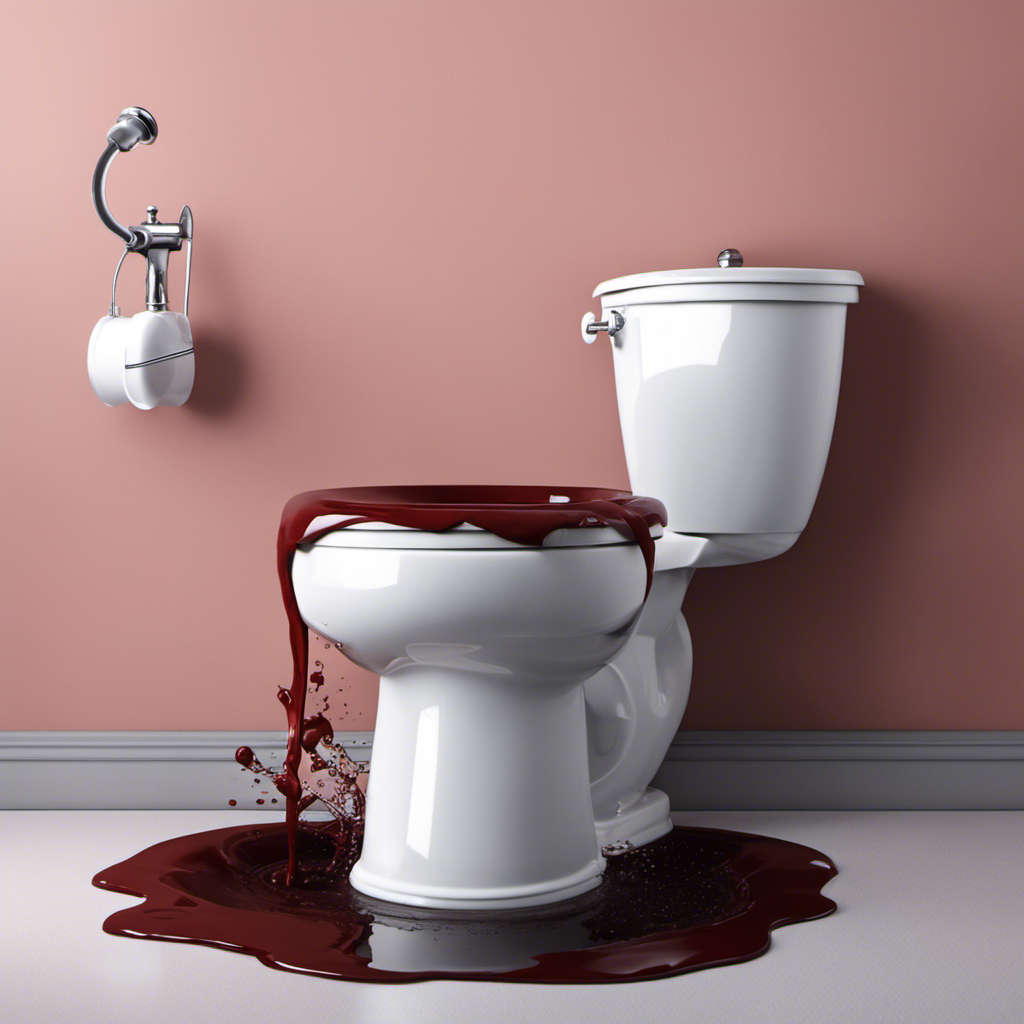Were you aware that approximately 90% of clogged toilets result from flushing items that ought not to be disposed of in this manner?
In this article, we’ll explore the reasons why something may come back up the toilet and how to handle such situations.
We’ll also discuss the role of gravity, common objects that can cause clogs, and the importance of toilet traps in preventing objects from resurfacing.
So, if you want to master the art of toilet maintenance, keep reading!
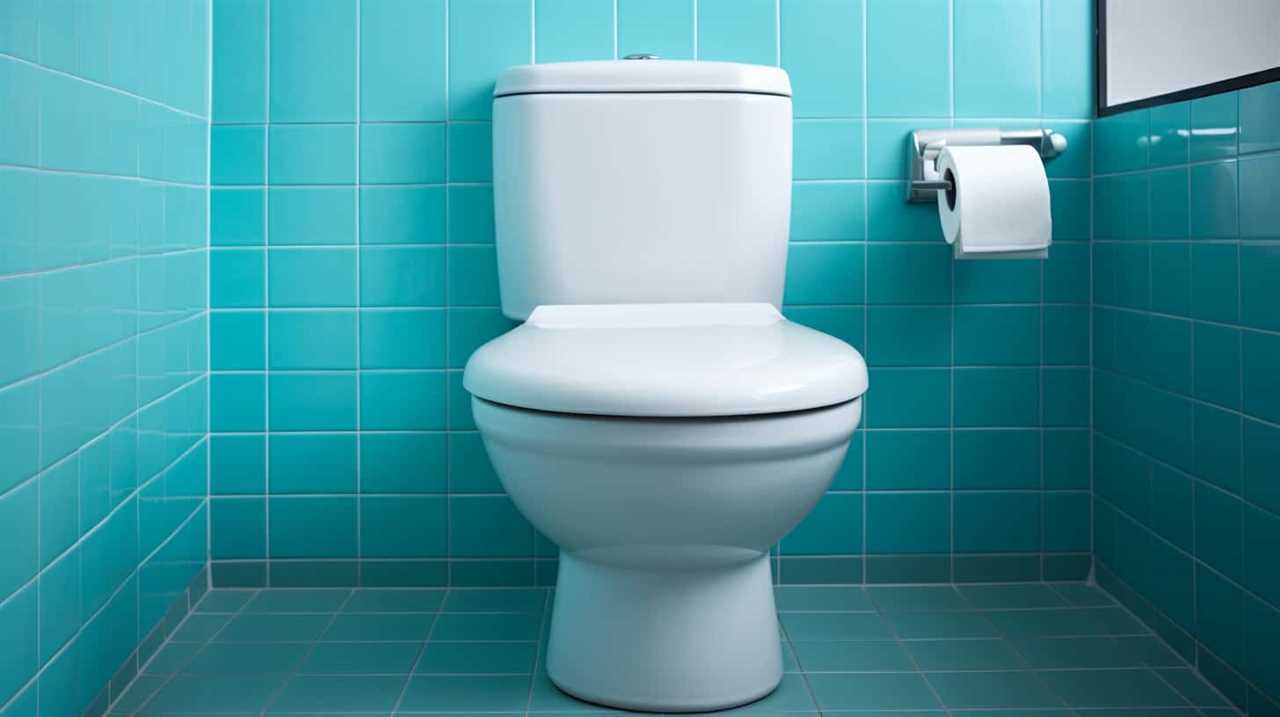
Key Takeaways
- Understanding the toilet drainage system and flushing mechanism is essential for addressing common problems like clogs, leaks, and slow draining.
- Backflow prevention measures, relying on gravity and backflow prevention devices, maintain sanitary conditions and prevent wastewater from flowing back into the tank or supply line.
- Common objects like feminine hygiene products, baby wipes, and cotton balls can cause toilet backups, emphasizing the importance of proper toilet hygiene and awareness.
- Causes of toilet backups include clogged pipes, tree root intrusion, flushing non-flushable items, and blocked sewer lines. Prevention involves avoiding improper flushing, maintaining the toilet lid, proper waste disposal, and regular maintenance.
Understanding the Toilet Drainage System
In our homes, a significant amount of waste and wastewater is flushed down the toilet every day, thanks to the efficient and reliable drainage system that ensures everything flows smoothly.
The toilet drainage system consists of several components that work together to transport waste from the toilet bowl to the sewer system. However, like any other system, the toilet drainage system can encounter common problems that may disrupt its functionality.
Some of these problems include clogs, leaks, and slow draining. Troubleshooting techniques can be employed to address these issues effectively. For instance, using a plunger or a drain snake can help dislodge clogs, while inspecting and replacing faulty seals or pipes can resolve leaks.
Understanding the toilet drainage system and familiarizing oneself with these troubleshooting techniques can help homeowners maintain a properly functioning toilet and prevent potential problems.
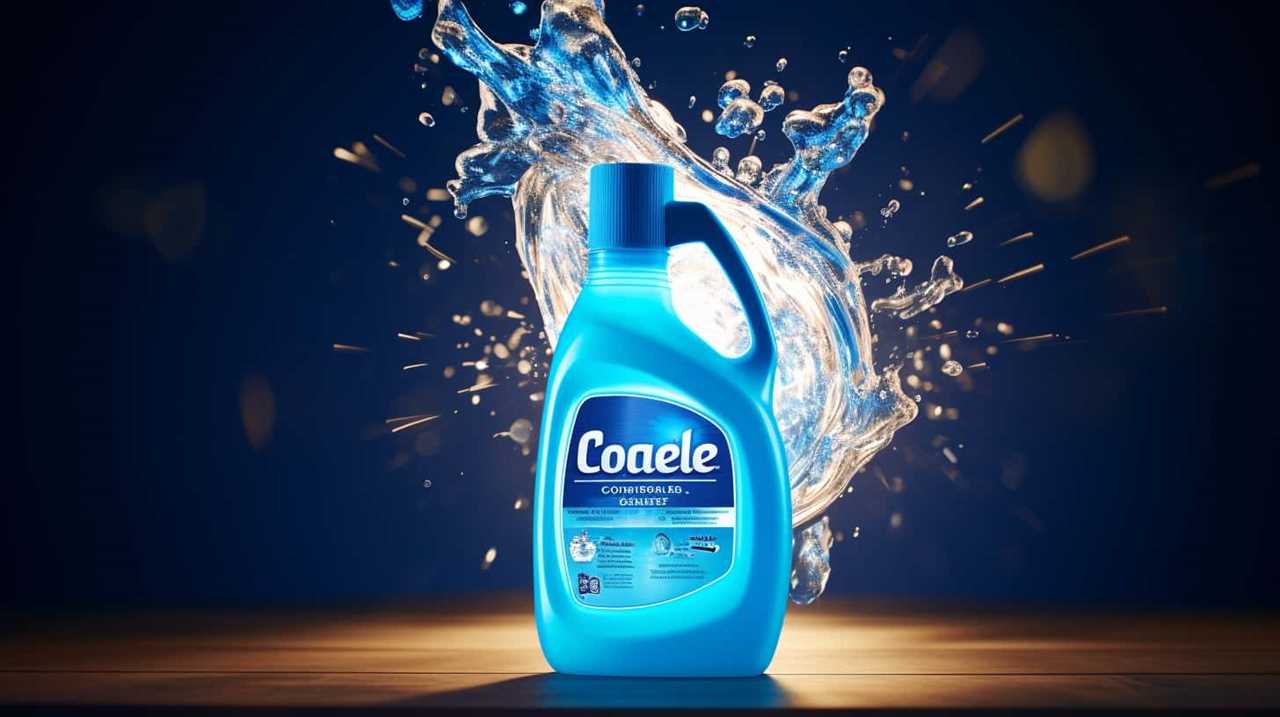
The Role of Gravity in Toilet Flushing
When it comes to toilet flushing, gravity plays a crucial role in the process. Gravity, combined with water pressure, creates the force needed to move waste and water down the drain.
The toilet flushing mechanism relies on the force of gravity to initiate the siphoning action, which quickly and efficiently removes waste from the bowl.
To prevent backflow, backflow prevention measures such as valve mechanisms or traps are in place to ensure that waste and water flow in one direction only.
Gravity and Water Pressure
With the force of gravity and the pressure of water, objects can be flushed down the toilet. Gravity plays a crucial role in the flushing process, as it pulls the waste and water down into the sewer system.
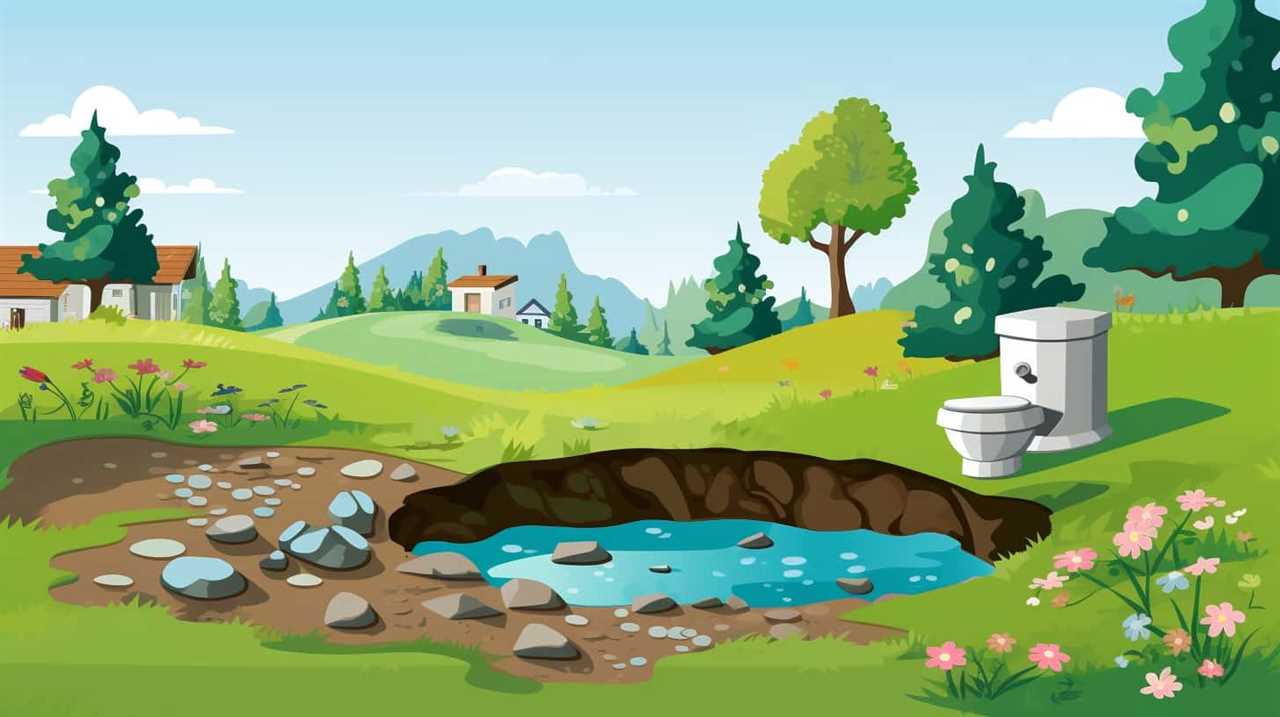
When you flush the toilet, the water level in the tank drops, releasing the stored water into the toilet bowl. This sudden rush of water creates a high pressure zone, pushing the waste through the trapway and into the sewer pipe.
The shape of the toilet bowl, specifically the toilet bowl siphon, also aids in the flushing process. The siphon helps create a vacuum effect, further assisting in the removal of waste.
It’s important to maintain the proper water level in the toilet, as a low water level can affect the efficiency of the flushing mechanism.
Toilet Flushing Mechanism
The toilet flushing mechanism relies on gravity to effectively remove waste from the bowl. When the flush lever is pressed, it initiates a series of events that utilize toilet flush technology to create a powerful force that expels waste and cleans the bowl.

Here is a breakdown of the toilet flushing mechanism:
- Water release: When the flush lever is pressed, a valve opens, allowing water from the tank to rush into the bowl. This sudden influx of water creates a surge of pressure.
- Siphoning action: As the water rushes into the bowl, it creates a siphoning action. This siphoning action effectively pulls waste and water out of the bowl and into the drainpipe.
- Gravity’s role: Gravity plays a crucial role in the flushing mechanism by pulling the waste and water down the drainpipe, ensuring that it’s effectively removed from the bowl.
The impact of water pressure, combined with gravity, creates a powerful flushing action that efficiently removes waste from the toilet bowl.
Backflow Prevention Measures
To ensure that nothing comes back up the toilet, we implement backflow prevention measures that rely on the role of gravity in the flushing process. These measures are essential in maintaining the sanitary and hygienic conditions of our plumbing systems.
Toilet backflow, which is the undesirable reversal of wastewater in the plumbing system, can occur due to various reasons such as clogs, blockages, or pressure imbalances. Backflow prevention devices are installed in toilets to prevent this occurrence.

These devices work by utilizing the force of gravity to create a unidirectional flow of water. When the toilet is flushed, water is released from the tank and flows down towards the toilet bowl, carrying waste with it. Simultaneously, the backflow prevention device ensures that the wastewater doesn’t flow back up into the tank or the supply line, thereby preventing any contamination or damage to the plumbing system.
Common Objects That Can Get Flushed Down the Toilet
We often find ourselves surprised by the various objects that can end up flushed down the toilet. Maintaining proper toilet hygiene and being aware of what should and shouldn’t be flushed is crucial to prevent clogs and costly repairs.
Here are three common objects that can unintentionally find their way into the toilet:
- Feminine hygiene products: These products are designed to absorb liquid, which makes them prone to expanding and causing blockages in the pipes.
- Baby wipes: Although some brands claim to be flushable, most wipes don’t break down easily and can lead to clogs.
- Cotton balls and swabs: These items may seem harmless, but they can accumulate and combine with other debris in the pipes, creating obstructions.
How Clogs Can Form in the Toilet Drain
In our experience, clogs in the toilet drain can occur when objects become lodged in the pipes. Toilet clogs or blockages can happen due to various reasons, such as excessive toilet paper usage, flushing non-flushable items, or accumulation of debris over time.
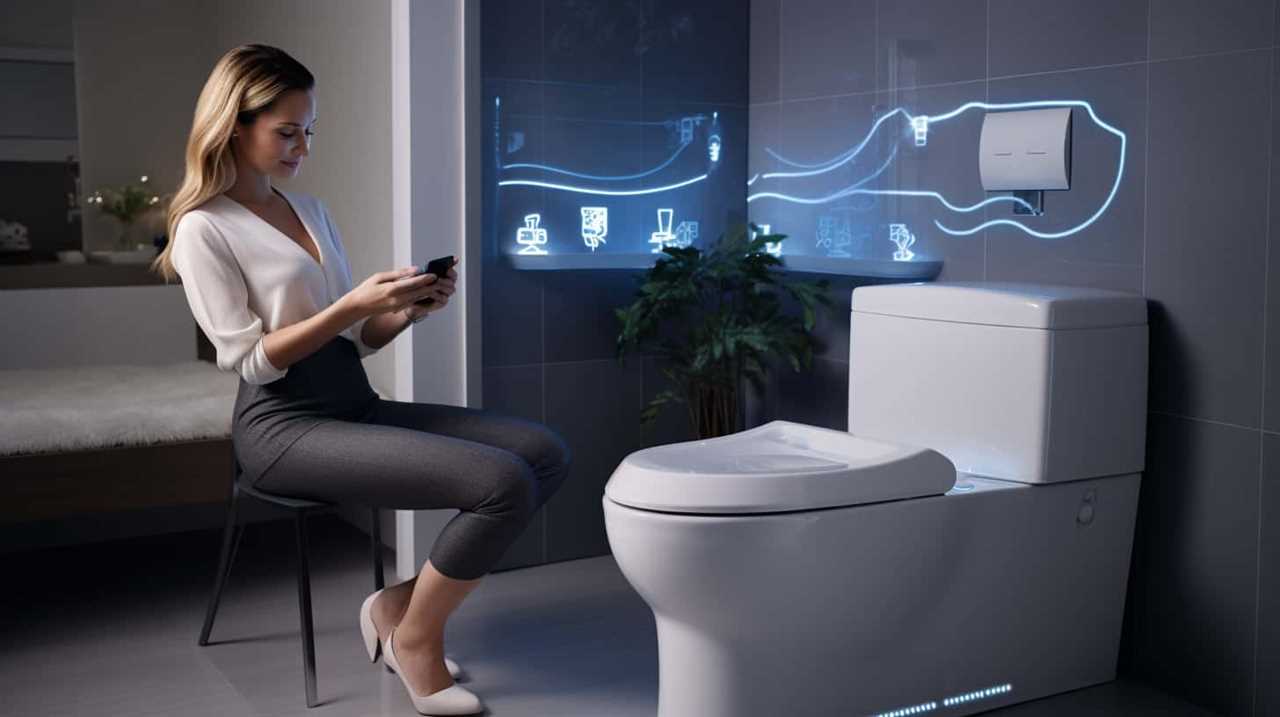
When an object, like a toy or a sanitary product, is flushed down the toilet, it can get stuck in the narrow pipes, obstructing the flow of water and causing a blockage. Additionally, the buildup of mineral deposits, grease, and hair can further contribute to clogs in the toilet drain.
These blockages can lead to water backing up in the toilet bowl, slow drainage, or complete toilet malfunction. Regular inspection and proper maintenance can help prevent toilet clogs and ensure the smooth operation of the drainage system.
Reasons Why Something May Come Back up the Toilet
There are several reasons why something may come back up the toilet.
One common reason is blockage in the sewer line, which can cause the water and waste to flow back into the toilet bowl.

Another reason could be a malfunction in the plumbing system, such as a faulty check valve or a problem with the sewer venting.
These issues can lead to a reverse flow of water and waste, resulting in something coming back up the toilet.
Blockage Causes Backup
One common cause of something coming back up the toilet is due to a blockage in the plumbing system. When the toilet drain becomes blocked, water and waste can no longer flow freely, leading to a backup. Here are three reasons why a toilet blockage can cause a backup:
- Clogged pipes: Over time, debris, such as toilet paper, hair, or foreign objects, can accumulate and create a blockage in the pipes, preventing proper water flow.
- Tree root intrusion: Tree roots seeking moisture can grow into the sewer pipes, causing blockages and restricting the flow of waste.
- Flushing non-flushable items: Flushing items like baby wipes, sanitary products, or paper towels can cause blockages as they don’t break down easily in water.
Understanding these causes can help homeowners prevent toilet blockages and subsequent overflows.

However, blockages aren’t the only reason for toilet backups. Let’s now explore other potential issues related to plumbing system malfunctions.
Plumbing System Malfunctions
Now let’s delve into some common plumbing system malfunctions that can cause something to come back up the toilet. One of the main reasons for a toilet backup is a blocked sewer line. This can occur due to various factors such as tree roots infiltrating the pipes, accumulation of debris, or a collapsed pipe. It is important to be aware of the signs of a blocked sewer line, including slow draining sinks and tubs, gurgling noises coming from the toilet, and foul odors. Regular toilet maintenance can help prevent these malfunctions. Here are some tips to keep your toilet functioning properly: 1) Avoid flushing items that can clog the pipes, such as paper towels or feminine hygiene products. 2) Use a plunger to clear minor clogs before they become major issues. 3) Consider scheduling regular professional inspections and cleanings to identify and address any potential problems before they escalate.
| Toilet Maintenance Tips | Signs of a Blocked Sewer Line |
|---|---|
| Avoid flushing items that can clog the pipes | Slow draining sinks and tubs |
| Use a plunger to clear minor clogs | Gurgling noises coming from the toilet |
| Schedule regular professional inspections and cleanings | Foul odors |
The Impact of Improper Flushing on Toilet Functionality
How does improper flushing affect our toilets’ functionality?
Improper flushing can have a significant impact on the functionality of our toilets and the overall performance of our plumbing system. Here are three ways in which improper flushing can cause problems:

- Clogging: Flushing improper items such as sanitary napkins, paper towels, or excessive amounts of toilet paper can lead to clogs in the plumbing system. These clogs can cause backups and prevent the toilet from flushing properly.
- Damage to the flushing mechanisms: Toilet flushing advancements have made toilets more efficient and effective. However, improper flushing can damage these mechanisms, such as the flapper valve or the flush handle, leading to leaks, weak flushes, or even complete malfunction.
- Increased water consumption: Flushing more water than necessary or using the toilet as a waste disposal can result in excessive water consumption. This not only wastes water but also puts a strain on the plumbing system, potentially leading to higher water bills and increased environmental impact.
It is crucial to flush only appropriate materials and follow proper flushing practices to maintain the optimal functionality of our toilets and plumbing systems.
Methods to Prevent Objects From Coming Back up the Toilet
To prevent objects from coming back up the toilet, there are two key methods to consider.
First, always make sure to close the toilet lid after use as it acts as a barrier, preventing anything from accidentally falling in.
Second, proper waste disposal is crucial. Avoid flushing anything other than toilet paper and human waste down the toilet to reduce the risk of clogs and objects coming back up.
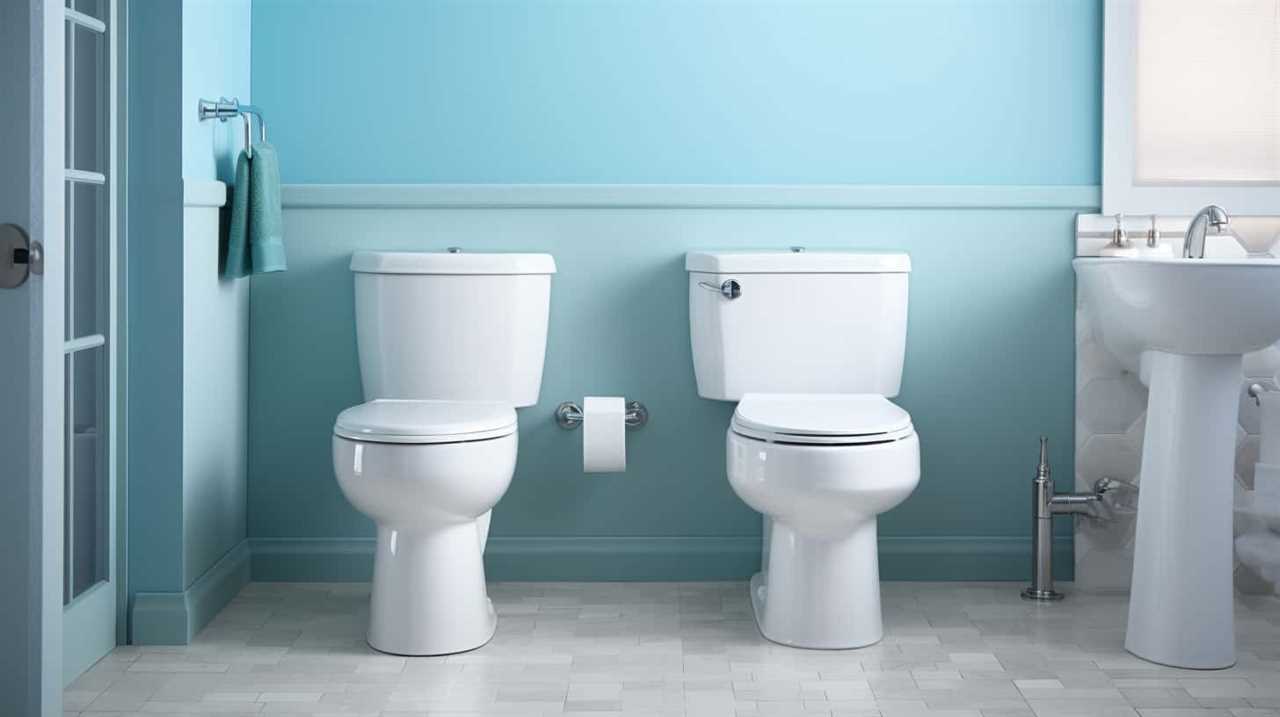
Toilet Lid as Barrier
One effective method to prevent objects from coming back up the toilet is by using a sturdy toilet lid as a barrier. The toilet lid serves as a protective cover, preventing any objects from accidentally falling into the toilet and potentially causing blockages or damage. Here are three key points to consider regarding the use of a toilet lid as a barrier:
- Toilet lid safety: Ensure that the toilet lid is securely attached to the toilet bowl to prevent it from accidentally dislodging. Regularly inspect the lid for any cracks or damage that may compromise its effectiveness.
- Toilet lid maintenance: Clean the toilet lid regularly to remove any dirt or debris that may accumulate. Use mild soap and water to avoid damaging the lid’s surface. Avoid using abrasive cleaners or scrub brushes that could scratch or weaken the lid.
- Additional precautions: Consider using childproof locks or latches to further secure the toilet lid, especially in households with young children or pets. This can prevent accidental access and potential hazards.
Proper Waste Disposal
To prevent objects from coming back up the toilet, we must focus on proper waste disposal methods.
Proper waste disposal is crucial not only for preventing clogs and backups, but also for minimizing the environmental impact.
When it comes to disposing of waste in the toilet, it’s important to remember that only human waste and toilet paper should be flushed. Flushing anything else, such as feminine hygiene products, diapers, or paper towels, can lead to blockages in the plumbing system.

These blockages can cause objects to come back up the toilet, creating a messy and unsanitary situation.
By practicing proper waste disposal and only flushing appropriate materials, we can prevent objects from returning up the toilet and ensure the proper functioning of our plumbing systems.
Transitioning into the next section on the importance of regular toilet maintenance, it’s essential to understand that even with proper waste disposal practices, regular maintenance is still necessary to prevent any potential issues from arising.
The Importance of Regular Toilet Maintenance
We regularly maintain our toilet to ensure optimal functionality and prevent potential issues. Proper toilet maintenance is essential to keep your bathroom clean, prevent costly repairs, and prolong the lifespan of your toilet. Here are three important toilet maintenance tips to follow:

- Regular cleaning:
Regularly clean your toilet bowl, seat, and tank to prevent the buildup of dirt, grime, and bacteria. Use a mild cleaner and a toilet brush to scrub the bowl, and wipe down the seat and tank with a disinfectant. - Check for leaks:
Inspect your toilet regularly for any signs of leaks. Check the base, tank, and supply line for any water pooling or dampness. Leaks can lead to water damage and increased utility bills, so it’s crucial to address them promptly. - Maintain the flushing mechanism:
The flushing mechanism is one of the most common areas for problems. Ensure that the flapper, fill valve, and flush handle are working correctly. If you notice any issues, such as weak flushing or constant running, it’s important to fix them promptly to avoid further damage and water wastage.
Signs That Something May Be Coming Back up the Toilet
If you notice any signs of something coming back up the toilet, such as water bubbling or gurgling, it is important to address the issue promptly. These signs indicate that there may be a toilet backup problem that needs immediate attention. To help you identify these signs, here are some common indicators that something may be coming back up the toilet:
| Sign | Description |
|---|---|
| Water bubbling or gurgling | This is often the first sign of a toilet backup and indicates a blockage. |
| Slow draining | If the water takes longer than usual to drain, it may be a sign of a backup. |
| Foul odors | Unpleasant smells coming from the toilet can be a sign of a backup. |
| Water rising | If the water level in the toilet bowl starts to rise, there is a backup. |
| Strange noises | Gurgling or bubbling sounds when flushing suggest a potential backup. |
How to Handle a Toilet Backup Situation
Once you have identified the signs of a toilet backup, it’s important to know how to handle the situation effectively. Understanding toilet blockages and following the right steps to unclog a toilet can help you resolve the issue promptly. Here are three steps to help you handle a toilet backup situation:
- Stop the overflow: If you notice the water level rising dangerously high, locate the water shut-off valve behind the toilet and turn it off immediately. This will prevent further overflow and potential damage.
- Assess the blockage: Use a plunger to try and dislodge the obstruction in the toilet drain. Make sure you have a good seal around the drain and apply firm pressure to create suction. If the plunger doesn’t work, consider using a toilet auger to clear the blockage.
- Clean up and prevent future backups: Once the toilet is unclogged, thoroughly clean the area affected by the backup. To prevent future backups, avoid flushing non-flushable items and use a toilet paper that’s septic-safe.
By following these steps, you can effectively handle a toilet backup situation and avoid any further complications.
Now, let’s explore the role of toilet traps in preventing objects from coming back up.

The Role of Toilet Traps in Preventing Objects From Coming Back up
Toilet traps play a crucial role in preventing objects from coming back up the toilet drain. These traps are designed to create a barrier that stops any unwanted materials or debris from flowing back into the toilet bowl.
Maintaining the toilet trap is essential to ensure its proper functioning and prevent any potential backflow issues. Regular toilet trap maintenance involves inspecting and cleaning the trap to remove any buildup or obstructions that could hinder its effectiveness.
Additionally, implementing backflow prevention techniques can further enhance the trap’s performance. These techniques may include installing backflow prevention devices or ensuring that the plumbing system is properly vented.
Can Sewer Line Issues Cause Objects to Come Back up the Toilet
Sewer line issues can potentially cause objects to come back up the toilet. When the sewer lines are blocked or damaged, it can create a backflow of sewage into the toilet bowl. This can lead to unpleasant and unsanitary situations in your bathroom. To prevent objects from coming back up the toilet due to sewer line issues, it’s essential to prioritize sewer line maintenance.
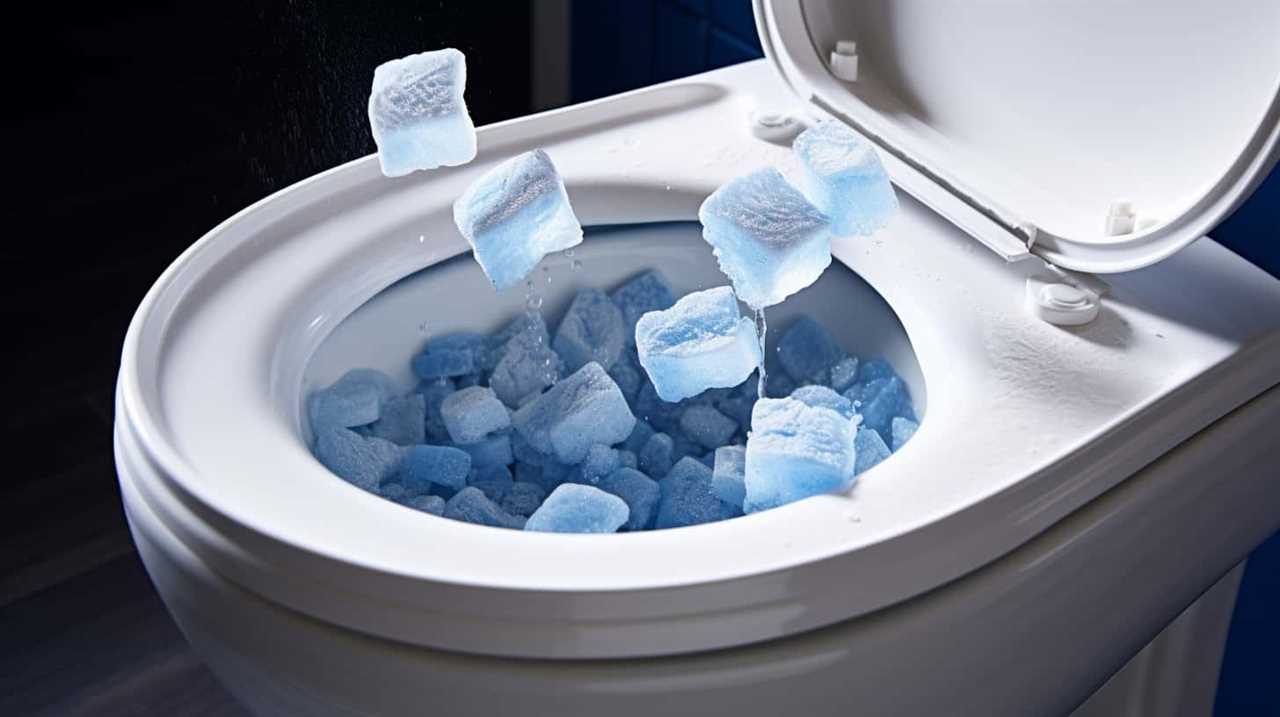
Here are three key steps to ensure toilet backup prevention:
- Regular inspections: Schedule routine inspections of your sewer lines to identify any potential issues before they escalate. This can help detect blockages, leaks, or cracks in the sewer lines that may contribute to toilet backups.
- Prompt repairs: If any sewer line issues are identified during inspections, it’s crucial to address them promptly. Timely repairs can prevent the accumulation of debris or sewage that may cause objects to come back up the toilet.
- Proper disposal practices: Avoid flushing objects down the toilet that can clog the sewer lines, such as sanitary products, wipes, or excessive toilet paper. Proper disposal practices can minimize the risk of sewer line issues and subsequent toilet backups.
Steps to Take if Something Does Come Back up the Toilet
If an object does come back up the toilet, we should immediately remove it using a plunger or plumbing snake. This step is crucial to prevent further damage and ensure proper toilet function.
First, equip yourself with protective gloves to maintain hygiene.
Next, carefully insert the plunger into the toilet bowl, ensuring a tight seal. Apply firm but controlled pressure to create suction and dislodge the object.

If the plunger doesn’t work, a plumbing snake can be used. Insert the snake into the toilet drain and rotate it while applying gentle pressure to break up any blockages.
Once the object is removed, flush the toilet several times to ensure it’s functioning properly.
If these steps fail or if the situation worsens, it’s recommended to contact a professional emergency plumber to assess and repair any underlying toilet issues.
Conclusion
In conclusion, understanding the toilet drainage system and the role of gravity in toilet flushing is crucial in preventing objects from coming back up the toilet.
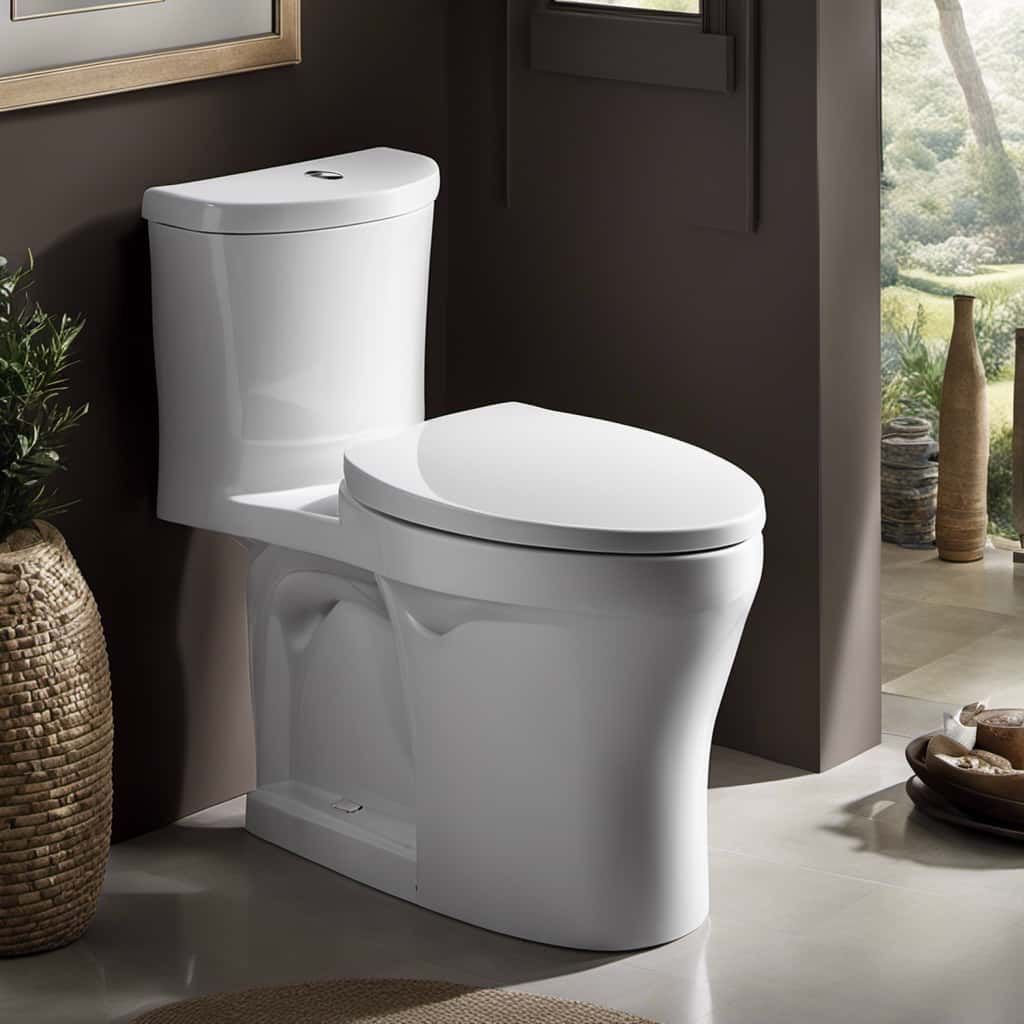
However, in some cases, clogs or sewer line issues can cause something to come back up.
It’s important to handle a toilet backup situation promptly and seek professional assistance if needed.
For example, a case study found that a child’s toy lodged in the sewer line resulted in repeated toilet backups until the object was removed.



